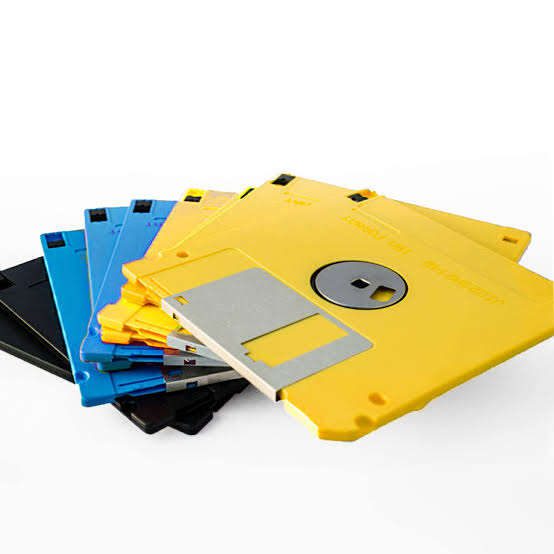- Class: Primary 3
- Term: 3rd Term
- Week: 2
- Age: 8 years
- Duration: 40 minutes
- Subject: Basic Science & Technology
- Curriculum Theme: Computer Studies
- Previous Lesson: Components of a system unit
- Topic: Components of a System Unit – 2
- Content: Floppy Disks, CD ROM Drive
Performance Objectives:
By the end of the lesson, pupils should be able to:
- Cognitive Domain: Identify and describe the functions of floppy disks and CD ROM drives.
- Affective Domain: Show appreciation for the evolution of data storage devices.
- Psychomotor Domain: Correctly label diagrams of floppy disks and CD ROM drives.
- Social Domain: Discuss in groups how these components influenced data sharing and storage in the past.
Reference Materials:
The following resources were used in planning this lesson:
- 9 – Years Basic Education Curriculum
- Abuja Educational Resource Centre Scheme of work
- NAPPS National Unified Scheme of Work
- Online Information from Computer Hope
Instructional Materials:
The teacher will teach this lesson with the aid of:
- Diagrams of Floppy Disks and CD ROM Drives
- Real-life examples of Floppy Disks and a CD ROM Drive (if available)
- Whiteboard and markers
Rationale for the Lesson:
Understanding floppy disks and CD ROM drives is crucial as it helps students appreciate the evolution of technology and its impact on data storage and retrieval, which is foundational knowledge in the study of computer science.
Prerequisite/Previous Knowledge:
Pupils are expected to have basic knowledge of computer system units and the concept of data storage.
INSTRUCTIONAL PROCEDURES:
Learning Area: Components of a System Unit
To deliver this lesson, the teacher will adopt the following steps:
| Content Development | Time | Teaching Method | Teaching Strategy | Teacher’s Activity | Pupil’s Activity | Learning Point |
|---|---|---|---|---|---|---|
| Step 1: Introduction | 5min | Direct Teaching | Set Induction | Introduce the topic, explain the day’s objectives. | Listen and respond to introductory questions. | Introduction to the day’s topic and objectives. |
| Step 2: Explaining Floppy Disks | 10min | Lecture | Explanation/Demonstration | Describe what floppy disks are, their use and history. | Listen, observe diagrams, ask and answer questions. | Understanding what floppy disks are. |
| Step 3: Explaining CD ROM Drives | 10min | Lecture | Explanation/Demonstration | Explain what CD ROM drives are, their function and importance. | Listen, observe diagrams, ask and answer questions. | Learning about CD ROM drives. |
| Step 4: Group Discussion | 5min | Group Activity | Interactive Learning | Facilitate group discussion on the use of these devices. | Discuss in groups, share thoughts with the class. | Enhancing social skills and reinforcing knowledge. |
| Step 5: Note Taking | 5min | Writing | Guided Practice | Dictate notes for pupils to write in their books. | Write notes in their books. | Reinforcement of learned content. |
| Step 6: Evaluation | 3min | Questioning | Assessment | Ask questions related to floppy disks and CD ROM drives. | Answer questions. | Assessing understanding of the topic. |
| Step 7: Conclusion | 2min | Summarizing | Closure | Recap the lesson, emphasizing key points. | Listen and ask any last-minute questions. | Summarization and closure of the lesson. |
Classroom Note:
Components Of A System Unit – Floppy Disks and CD ROM Drive
There are two important parts of a computer: Floppy Disks and CD ROM Drives.
Floppy Disks: These are old data storage devices that were used to store and share computer data. They look like small square plates and can hold up to 1.44 MB of data.
CD ROM Drive: CD stands for Compact Disc. CD ROM drives are used to read data stored on CDs. They can hold much more data than floppy disks, up to 700 MB.
Lesson Evaluation:
To evaluate the learning, the teacher asks pupils to:
- What is a floppy disk and what was it used for?
- Describe what a CD ROM drive is and its purpose.
- Draw a label diagram of a floppy disk and a CD ROM drive.
- Explain how floppy disks and CD ROM drives have changed how we store data.
Note for teachers using my lesson plan:
Hi there, remember that I didn’t make this lesson plan with any particular class or teacher in mind and I tried as much as possible with my experience and expertise to deliver this plan in a standard and effective style utilizing the best strategy and methods. Nevertheless, you are free to customize the lesson content, teaching methods, timing and pupil activities to suit your teaching style, pupils comprehension, curriculum, and resources available to you. Happy teaching!







